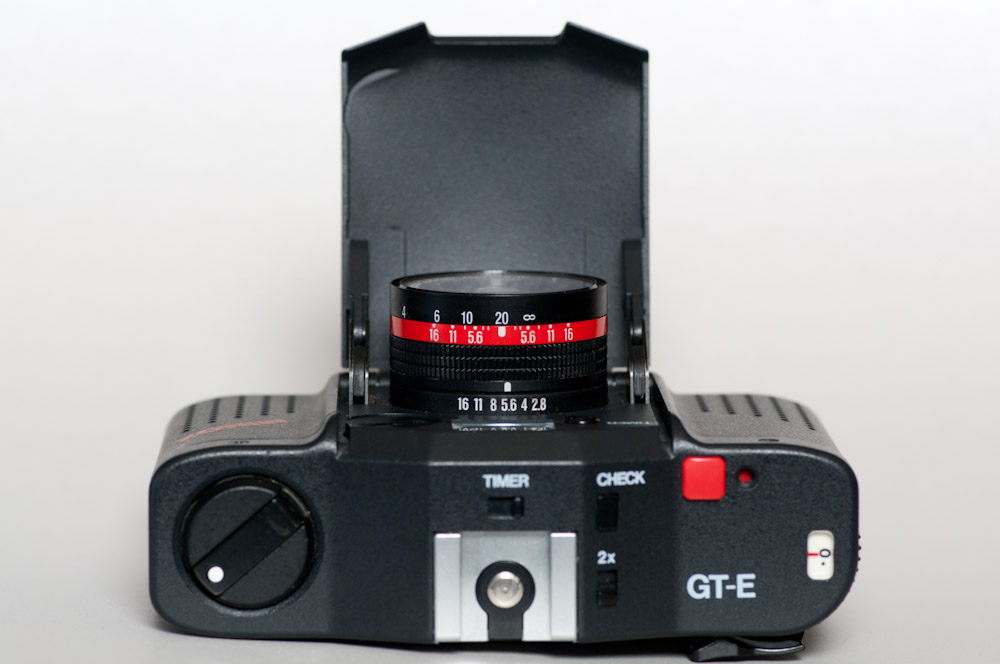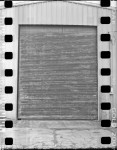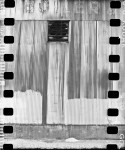Aug
5
2013

The Yashica T3 is one of those cameras that you tend to keep coming back to using because of the lens. I haven’t been able to definitely pinpoint what sets the look of the images from this camera apart but I know I like the results. It’s not always easy to convey that through small web images and these look a little soft as I post them but the originals are not.
no comments | tags: camera, film, Photography, Yashica | posted in Cameras, Photography
Jul
27
2013


I’m often looking to expand my photography beyond the bounds of a single image either through multiple exposures or image pairs. Now I’ve found another tool the Fuji Rensha Cardia with its sixteen individual lenses. If the dimpled shutter release button isn’t enough to indicate that it was originally intended to record your golf swing then the icon of the guy swinging a golf club should probably drain the putt. The lenses can be released at two rapid speeds in one sequence or one at a time with the second button on the left. The sixteen little sub frames are recorded across two standard 35mm frames. Therefore the first frame contains the image from 1 to 4 on the top and 9 to 12 on the bottom.

I created animations from the individual images like from the image above
And experimented with the individual shutter release in images like the one bellow. There are many more things that can be done within the 16 frames

Yes you could shoot individual pictures with some form of digital camera or phone and then stitch them together but this is at least sixteen times more fun than doing that.
I put together a few animations that can be seen on Youtube
5 comments | tags: camera, film, Fuji | posted in Cameras, Photography, Processing
Jul
16
2013

My initial try with this camera was marred by the horrible out of date Polaroid brand film I used with it. If it hadn’t otherwise been such a good performing camera I would have just left it at that but it seemed to deserve another roll.
And how do I feel now? Well it’s a good camera with great ergonomics as I outlined in my first post Ricoh RZ3000 , but as for results it doesn’t produce anything that necessarily stands out. I could go back to bad film, that stands out but otherwise it doesn’t really give me a look that says this is why I still shoot film.
When I choose to use film one of the reasons is the overall experience of the camera, such as using a Twin Lens or a rangefinder but with the RZ3000 it’s almost too much like just using a digital camera. So as good as it is it will go back into a small box with similar cameras until I forget what I just wrote and take it out again.
2 comments | tags: camera, film, Photography, Ricoh | posted in Cameras, Photography
Jul
13
2013

Kodak gold, old Kodak Gold, old Expired Kodak Gold is the most frustrating film to scan while showing the sprockets. It not only wants to coil into a tight little roll it wants to curl into a ball from the sides. Arrrrggg (That is the sound Of frustration) The curling was so bad that I couldn’t even scan it as colour because of all the shifts from the orange C41 mask, or hold it flat. That is why despite the film being labeled Gold-200 it’s converted to Black and White.

Switching to the Yashica 44’s ground glass from an SLR viewfinder or an LCD screen takes some adjustment as everything is mirrored. So to move an object on the glass to the left the camera needs to be turned to the right. I tend to tilt the horizon for some reason so the red lines are very helpful. Another added aid is the small magnifier (not shown here) that can be popped out to check focus on the glass. Modifying this camera (Yashica 44 35mm conversion) is a great way of making it usable again despite the fact that it is a film orphan. I will never use Kodak Gold in it again though.
no comments | tags: camera, film, Photography | posted in Cameras, Photography, Processing
Jul
7
2013


Ever since I acquired a Pentax K-01 I have been looking to prove that its design isn’t as bad as it has been made out to be. I now have physical evidence that it is not the worst camera design in history ( I myself never thought that ). May I present to you the Chinon Handyzoom 5001. If you are a mason or a fan of masonry you will feel right at home with its brick like shape.
As its name suggest its handy to zoom, wait no that’s not right it’s unhandy to zoom even two handy, but that would be a lot harder to advertise. I wonder if the designers thought okay we have designed the worlds first ‘Auto Programmed Zoom Composing system ‘ so let’s hide the zoom buttons. Let me clarify, the camera has two on positions, with one mode the camera automatically zooms to help frame for portraits in the other mode the zoom works normally, if you can locate the buttons. Here is a hint they are underneath on the left.


It has a few other buttons on the top such as Flash mode, spot AF and BLC ( back light compensation) or maybe that’s Bacon Lettuce & Cheese because there isn’t any feedback when you press it. The manual says make sure you press it hard to be certain.
You should also remember that the camera automatically selects bulb mode, keeping the shutter open as long as you press the shutter button, when you have the flash turned off and the red LED in the viewfinder is solid red and not flashing. On second thought don’t remember that just put the brick down before someone gets hurt. Almost every feature of this camera requires memorizing some unrelated thing in order to use it, for this and its terrible ergonomics I crown it the worst camera design ever. Earlier I deposed this blogs monarch and crowned myself Emperor of camera design so I have the authority to do that.
And if you choose to disregard my warning and use one its lens is a
35 mm-70 mm. F/3.7 to F6.8 built with 8 elements in 6 groups built into a brick.
no comments | tags: camera, Chinon, film | posted in Cameras, Photography
Jun
29
2013

I picked this little Minox up at the 2013 Vancouver camera show. It does have an issue with the needle in the viewfinder that should indicate the shutter speed but doesn’t. However the actual shutter is working properly so it’s not the worst problem to have. There are many perfectly good cameras that I use where I have no idea what shutter speed the camera chose, at least with the Minox GT-E and it’s aperture priority I am selecting the aperture.
As for batteries it requires 5.6V to operate and some of these batteries can be hard to source. Fortunately 4 zinc air hearing aid batteries give 5.6v and fit perfectly so that’s what I’ve used. In keeping with the miniature nature of this 35mm camera the film advance requires two strokes per frame.
The camera is focused at the front of the lens where you also set the aperture, this allows you to easily select a range of focus based on the depth of field for a given aperture. This type of zone focusing is ideal for quick shooting where any other type of focusing is just too slow. For example when I took the image of the bronze horse I was on a moving escalator I saw the horse ahead and set my focus for about 10 feet and when I reached that distance I just snapped.
If you look at the picture of the camera bellow you can see that with the aperture set for f5.6 that the depth of field would give acceptable focus from about 12 feet to infinity focus.



Even with its case it is a very small camera but feels quite solid. I like that the viewfinder is located right above the lens, this doesn’t seem to get much mention but it limits the parallax error to up and down when framing a shot. I dislike framing a shot of a nearby object with a rangefinder only to find that I’ve included something I didn’t want in the frame. That’s one reason I love the 100% viewfinder on my DSLR and is also an attribute of cameras that use an LCD screen. But back to the little Minox, don’t let its cuteness fool you its a great camera and offers just that extra bit of control that is missing from another comparably great little camera the Olympus Stylus Epic.
And of course here come the images
2 comments | tags: camera, film, Minox | posted in Cameras, Photography
Jun
23
2013
Yet more images from Calgary with the fantastic little Olympus Stylus Epic.

2 comments | tags: camera, film, olympus | posted in Cameras, Photography
Jun
20
2013

These are the 12 exposures I managed to take with my Voigtlander Vito CL before the film stopped advancing. I first noticed it when I advanced the film and could hear it skipping the sprockets. I thought I was at the end of the film. How could I think that I had taken 24 shots when I only took twelve? That’s easy I was carrying a ‘litter’ of cameras and not really paying attention to which one I had used as well as the fact that I hadn’t set the counter for the Vito CL back to zero when I loaded the film. The only real loss was the potential of taking another 12 shots as I rewound the film as soon as I ran into the problem.
The Vito CL is a viewfinder camera and you focus by the scale on the front of the lens. I prefer an actual rangefinder but scale focusing works too, it just requires estimating distances accurately. I am happy with the quality of the pictures from the Lanthar 50mm f2.8 lens. The shutter button is actually a sliding switch on the face of the camera and works quite well if you grip the camera with both thumbs on the back. Holding the camera this way ends up further reducing the already low camera shake of the leaf shutter.
2 comments | tags: camera, film, Voigtlander | posted in Cameras, Photography
May
30
2013

I thought it would be fun to try Ilfords XP2 400 disposable camera to see just what you might get. I have to admit I have little experience with using disposable cameras and the results showed it. I think where I failed was assuming that there was more latitude for exposure than there was. Most of my images were terribly underexposed which makes sense in hindsight as the camera likely has a maximum aperture of somewhere around f8 and a shutter speed around 1/125 sec this combination would likely require an EV value around 13 where I shot most of my images at light levels far below that. In fact maybe a quarter of the images were not even scannable. The lesson is that these cameras are only useful under limited conditions. As for the flash I could have used it more if I had known but even then it wouldn’t have saved these shots. You can also see that the lens is quite soft in the corners, it is disposable after all.
ACHTUNG And most importantly of all if you open these cameras to recover the film (Which is just in a regular film canister) when your done make sure you give it to someone else to get shocked. Perhaps I should explain myself. I brought the camera to the local camera store where I have my film sent out for developing and asked for the camera back. Together the kind store employee, whose name I will change to protect their identity lets call them ‘Sparky’, and I started to take the camera apart carefully so as not to break it. When it was partially apart Sparky yelped and began shaking his hand like it had been stung by a bee or in this case a 300v 80µ farad capacitor. Just as all humans are compelled to sniff the sour milk I too picked up the camera thinking that it would now be discharged and safe. Whack! Flash! Drop! Bang! Good thing I don’t have a pacemaker. I’ve been shocked in this way before but it’s not something you get used to, every time is like the first time, the very first time, it ‘Feels Like the First Time’ (Foreigner 1977) Where was I? Right, you can see the warning on the back of the camera ACHTUNG Überspannung, Kamera Nicht ö ffnen Funny how it sounds more serious in German. 
Anyway here is a picture of the bits so that you don’t need to feed your curiosity with a shocking flash of understanding.

And finally some pictures taken with it.
1 comment | tags: black and white, camera, film | posted in Cameras, Photography
May
18
2013

Most of the images were taken with the Vivitar 28mm 1:2.0 Close Focus lens. The extra stop of light you get with this lens compaired to using a Pentax 28mm 1:2.8 might be useful in low light but it’s the ability to focus down to 23cm (roughly 9 inches) is what is the best thing about it. It is a heavy piece of glass and metal though and outways the Pentax 28mm to the point where its almost too heavy on my Pentax K-01. Otherwise if you can spare the weight it will deliver unique results.
no comments | tags: camera, lens, Pentax | posted in Cameras, Photography



















































































































































